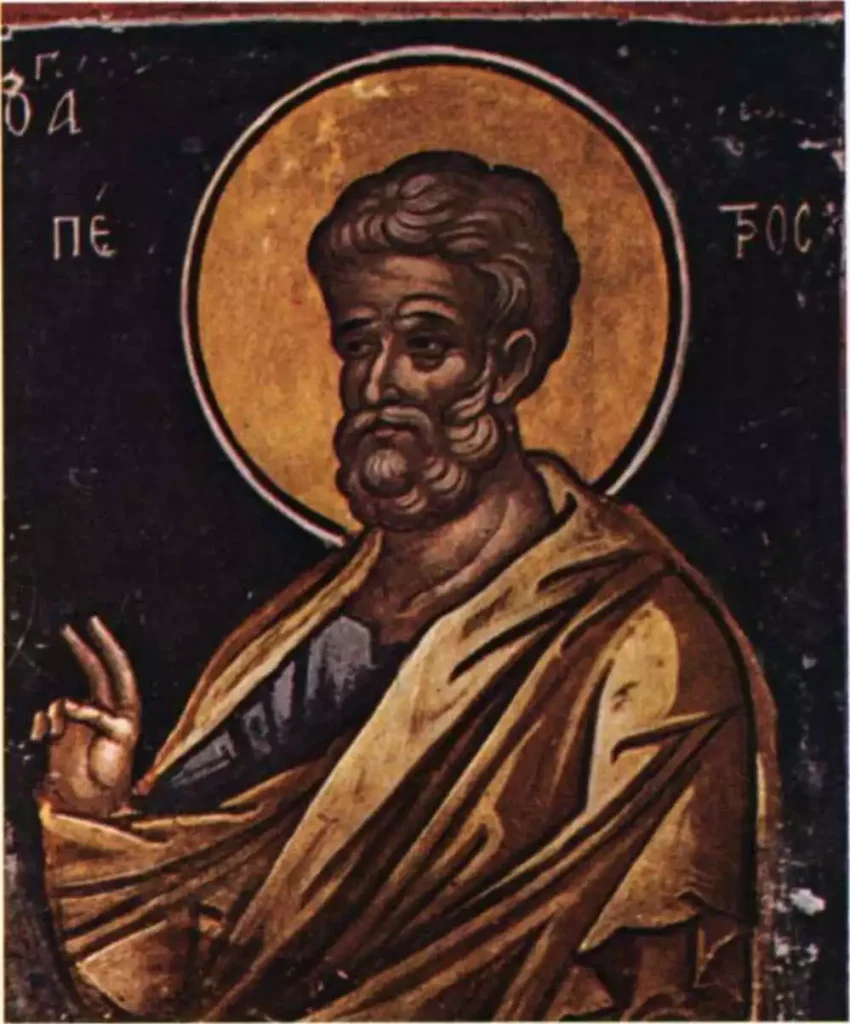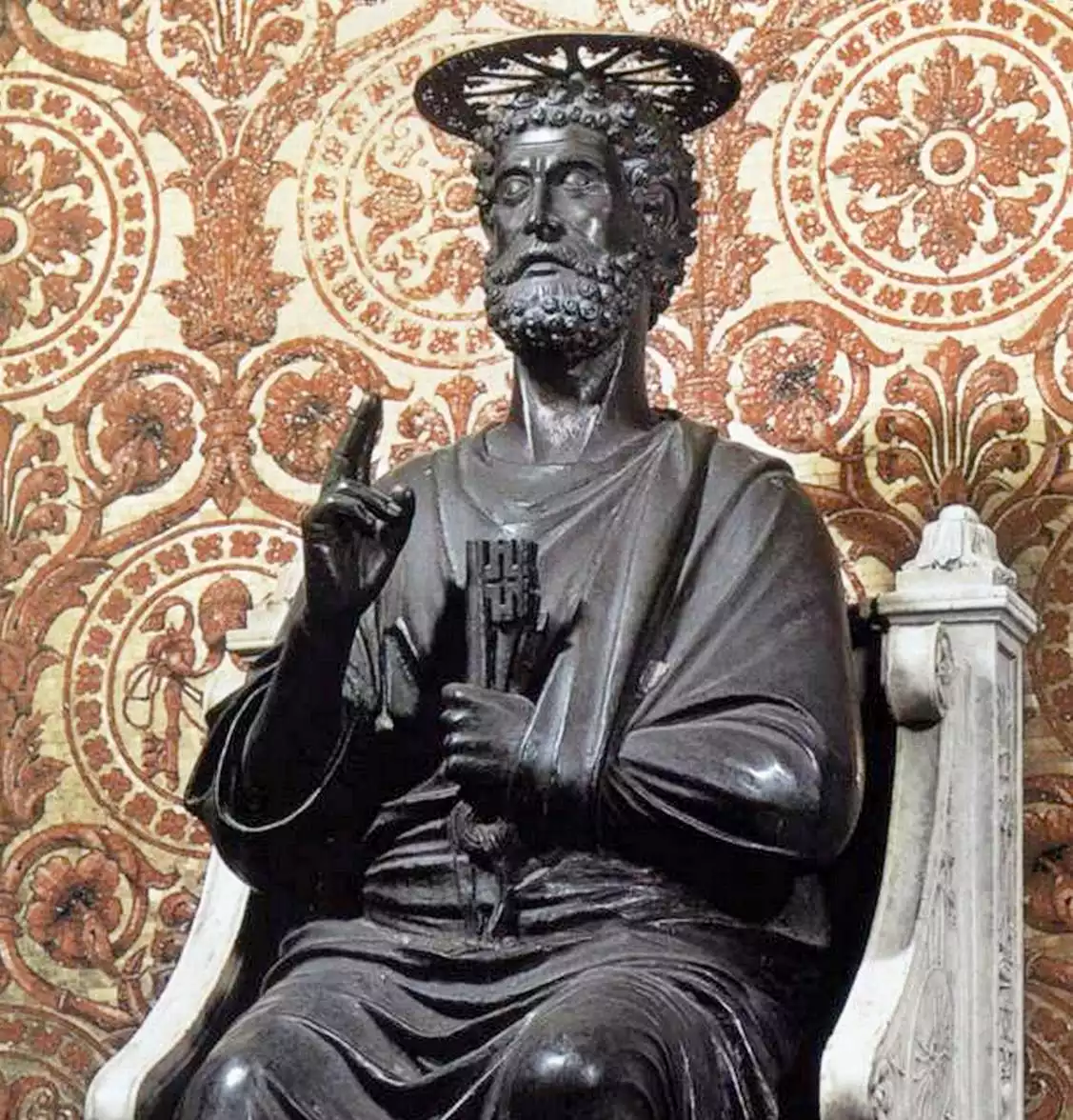
Saint Peter, born Simon, stands as a central figure in Christian history, revered as the first Pope and a principal apostle of Jesus Christ. His life, spanning from approximately 1 BC to 64-68 AD, marks a pivotal era in the nascent days of Christianity. Known for his unwavering faith and leadership, Peter’s journey from a humble fisherman to the cornerstone of the early Church encapsulates a story of redemption, devotion, and spiritual fortitude.
Early Life and Calling
Saint Peter, originally named Simon, was born in Bethsaida, a village on the Sea of Galilee. His life took a transformative turn upon encountering Jesus Christ. As a fisherman, Peter’s initial meeting with Jesus was marked by a miraculous catch, a moment that symbolized the beginning of his spiritual journey. Jesus, recognizing Peter’s innate leadership qualities, renamed him ‘Peter’, meaning ‘rock’, signifying his future role as the foundation of the Church.
The Gospels portray Peter as a devoted but at times impetuous disciple. His strong personality often led him to act with zeal, whether in his declaration of faith or in his momentary lapses, such as his denial of Jesus. These instances highlight Peter’s human vulnerabilities, making his journey towards spiritual growth more relatable and profound.
Peter’s role in the early Church was crucial. After the Resurrection of Christ, he emerged as a leader among the apostles, guiding the fledgling community through its formative challenges. The Acts of the Apostles chronicle his pivotal contributions, from his bold preaching on the Day of Pentecost to his vision that led to the inclusion of Gentiles in the Christian community.
Saint Peter’s life, marked by both human frailties and divine inspiration, serves as a testament to the transformative power of faith. His legacy continues to inspire Christians worldwide, embodying the ideals of leadership, repentance, and unwavering commitment to the teachings of Christ.

Ministry and Martyrdom
Saint Peter’s ministry was characterized by his profound commitment to spreading the teachings of Jesus Christ. After the Ascension of Jesus, Peter assumed a leadership role, guiding the early Christians through turbulent times. His sermons, imbued with fervor and conviction, attracted many to the faith, laying the groundwork for the growth of the Christian Church. His journey took him to various regions, including Jerusalem, Antioch, and ultimately Rome, where he established a strong Christian community.
In Rome, Peter encountered significant challenges. Under Emperor Nero’s rule, Christians faced severe persecution. Despite these trials, Peter remained steadfast in his faith, offering solace and guidance to his followers. His resilience in the face of adversity solidified the early Church’s foundations, ensuring its survival and expansion.
Saint Peter’s martyrdom, according to Christian tradition, occurred in Rome around 64-68 AD. Choosing to be crucified upside down as he deemed himself unworthy to die in the same manner as Jesus, Peter’s death epitomized his humility and devotion. This act of sacrifice left an indelible mark on Christian history, underscoring the depth of his faith and commitment.

Saint Peter’s life journey, from a simple fisherman to the cornerstone of the Christian Church, is a story of transformation and unwavering faith. His leadership, teachings, and martyrdom continue to resonate with Christians worldwide. As the first Pope, his legacy is integral to the foundations of the Christian faith, symbolizing the power of redemption and the enduring strength of spiritual conviction.
Feast Day: June 29
Patron Saint: Fishermen, Net Makers, Shipbuilders, Butchers, Glass Makers, Locksmiths, Cobblers
References
- Butler, Alban. Lives of the Saints. HarperSanFrancisco, 1991.
- Eusebius of Caesarea. Ecclesiastical History. Baker Academic, 2007.
- Lapham, Fred. Peter: The Myth, the Man, and the Writings. Sheffield Academic Press, 2003.
- O’Connor, Daniel William. Peter in Rome: The Literary, Liturgical, and Archaeological Evidence. Columbia University Press, 1967.
- Walsh, Michael J. The Triumph of the Meek: Why Early Christianity Succeeded. Harper & Row, 1986.
